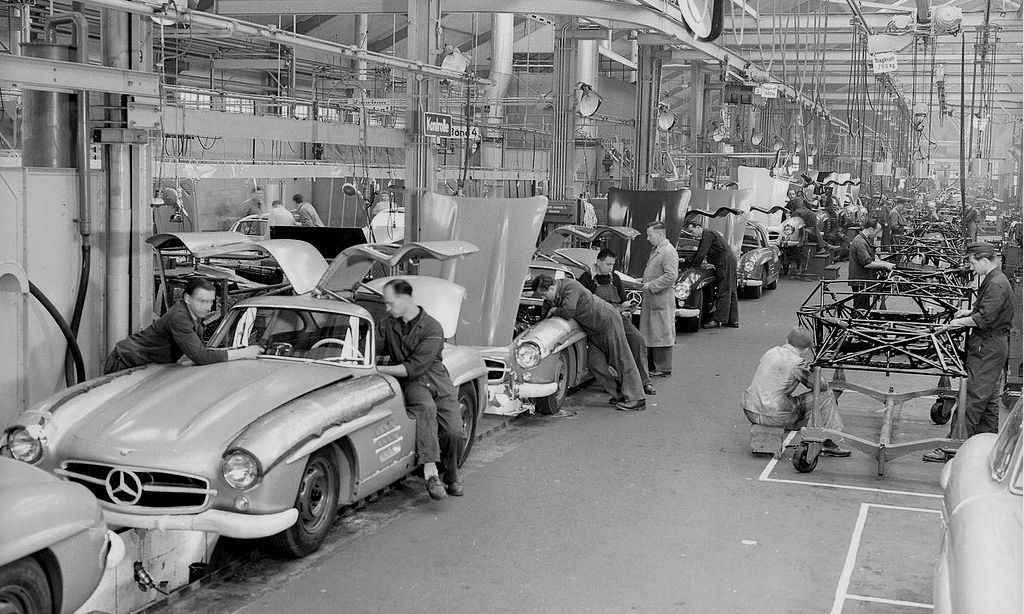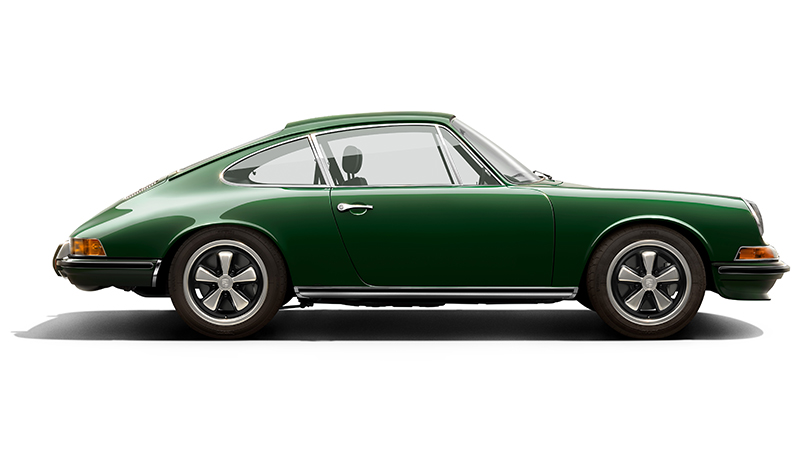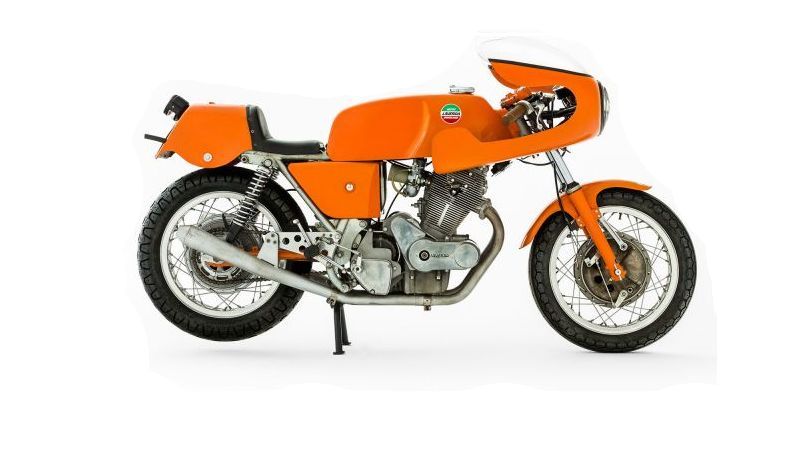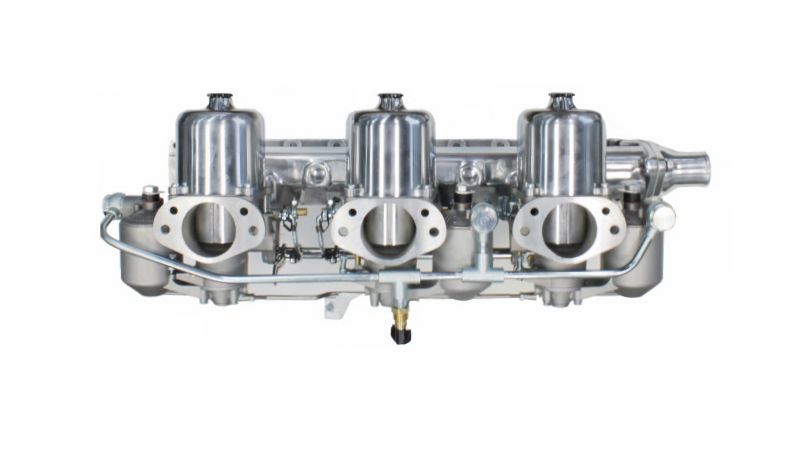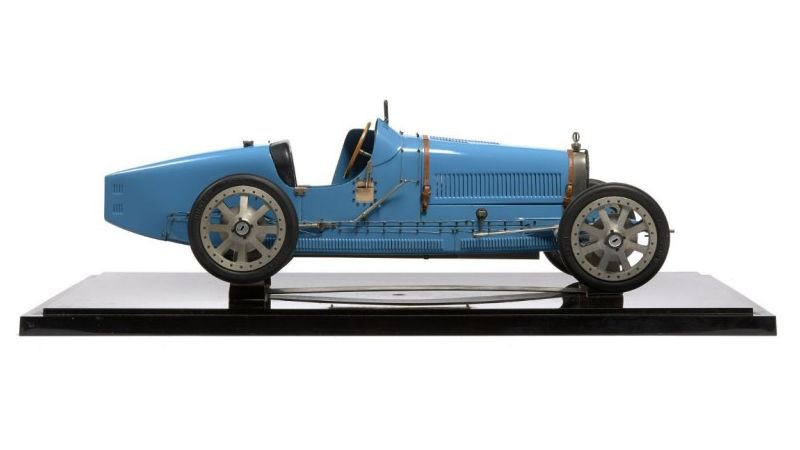Mercedes-Benz Motor Cars
Blitzen Benz & Silberpfeil
A German car named by an Austro-Hungarian in France, and with a girl's name! Mercedes is a Spanish name. It means - mercies - but the sleek powerful speedsters have never shown any mercy, singular or plural, toward a competitor on the race course.
The delicate female name has, since the turn of the century, graced the radiators of a series of cars whose thunderous power and precision handling dominated the tracks of the world. From Indianapolis to Le Mans, from Ireland through England and into Italy, at home in Germany, the Mercedes has left a memory of sheer excellence.
The car belies the ingenuous simplicity of its name. Flashing speed and brutal power is all masculine. The only thing feminine about a Mercedes is the name.
The modern Mercedes is a good-looking car. The smooth sweeping lines of the sports and racing cars are complemented by the quiet dignity of the sedans and limousines, and in this area of functional design, the graceful name is completely justified.
Mercedes Jellinek was a goodlooking girl, the daughter of Emile Jellinek, Consul-General of the Austro-Hungarian Empire, on duty in Nice, France. He was quite a wealthy man, director of a bank, and sort of an ex-officio agent for Daimler cars in France.
But the staid Jellinek had another, hidden and rakish, side to his character. He raced cars. In order to keep his dignity in the business world, he raced under pseudonym, his daughter's name, Mercedes.
In 1898 and 1899 Gottfried Daimler and his chief designer Wilhelm Maybach built a racing car called the Canstatt-Daimler. This machine was very unstable and terribly dangerous. Only a few were made, but they managed to kill several drivers.
Emile Jellinek owned one, and he expressed his dissatisfaction by urging Daimler to produce a machine that could not only race, but also tour the roads safely. This suggestion was eagerly accepted by the company. They quietly buried the Canstatt-Daimler design and Wilhelm Maybach created a new car.
This was in 1900. The machine was developed from an experimental version built by Daimler's son Paul, and from a historical point of view it was the first car that looked like a car. Discarded was the old converted horse-carriage appearance and in its place rose a basically designed automobile.
The canny Jellinek placed an option on the entire original production run and his foresight was amply rewarded. But Jellinek, alias - Monsieur Mercedes - the surreptitious race driver, made another stipulation. The new car must bear the name of his daughter. Daimler and Maybach agreed, and the only great car to carry a girl's name was born.
The Mercedes, in terms of genealogical line, is the oldest car in automotive history. It stems directly from the first practical car made, the original Daimler of 1886. When Gottfried Daimler died in 1900, there were rumors of the collapse of the company. It was believed that without the great engineering genius at the helm, the firm could not continue its outstanding technical development.
Financiers thought that only the original Daimler patents had value, but they reckoned without four major items. First, Wilhelm Maybach as chief engineer. Second, the presence of Paul Daimler who had the same inventive ability as his father. Third, Emile Jellinek, now director of the company, whose business sense and financial backing was first rate. Finally, the tremendous success of the new Mercedes. The Daimler Motoren Gesellschaft was on the soundest footing possible.
In 1909 the threepointed star became the official emblem, and was most often seen on the rear of the Mercedes cars by other drivers as they vainly tried to catch the flying speedsters.
The factory sent Mercedes racing teams to every major race in the world. They invaded America in force in the years before World War I, winning races on all sorts of tracks throughout the United States. Most spectacular were the yearly duels at the 500 mile Indianapolis race. In those days, French and German cars dominated the winners circle.
Mercedes battled with Peugeot, finally winning in 1915 with Ralph de Palma at the wheel. This made up for a heartbreaking loss in 1912 when de Palma's four-year-old Mercedes led the field for 498 miles only to break down with two miles to go.
A very pointed conflict took-place in 1914 at the French Grand Prix. With international relations at a breaking point the Daimler factory decided to show the French the superiority of the Mercedes.
The race was planned with extreme precision. German drivers and mechanics explored the course thoroughly. It was near Lyon, twentythree miles long, with twenty laps required for completion. The Mercedes team arrived three months ahead of time. They practiced every twist and turn, sent the cars back for modifications, and returned for more practice. The pit crew was trained for precision operation with an elaborate signal system to the drivers.
This thorough, typically Teutonic approach resulted in a resounding victory. The Mercedes team crossed the finish line in one-two-three order, but the normally sportsmanlike French audience refrained from any applause. The political tensions were too great for the usual niceties and in a month's time the French and German armies clashed on the battlefield.
After World War I the Daimler corporation took several years to get re-organized. Not only were materials in short supply, but the plant had to be converted from its military production system. Private owners were racing their pre-war cars, but the factory decided to wait until a new machine was ready. They did not wait too long. In 1923 they entered racing again with a car designed by Dr. Ferdinand Porsche.
Porsche's talents as an engine designer were the greatest postwar asset that the Daimler corporation acquired. The company really needed him. Bugatti, Bentley, Alfa-Romeo and Maserati were on the scene with cars far superior to the older Mercedes. Under Porsche's technical direction the famous S series took the road.
These sports-racing cars had supercharged engines and were almost as fast as the Grand Prix racers. From the S through SS, SSK to the legendary SSKL, Mercedes began to pile up an impressive total of victories.
In 1926, perhaps due to the increasing inflation in Germany and the need to pool resources, the Daimler and Benz Corporations merged. In a sense, it was almost poetic. The founders of both companies were the originators of the automobile, and their efforts had changed the face of the world.
Under the name Daimler-Benz the new company had an undisputed claim to the earliest heritage of the automobile, an unbroken line from the first patents on. The cars were henceforth known as Mercedes-Benz.
Part of the merger was the setting up of a joint technical operation. Benz's chief engineer, Hans Nibel, joined Porsche as co-director of engineering: Nibel is to be remembered as the designer of the Blitzen Benz, the car that set one of the early land speed records at Daytona.
But Porsche was too independent to continue working under a joint arrangement. He left in 1929, having established Mercedes-Benz as one of the foremost cars of its time.
Although great attention was paid to racing, the new firm kept its financial solvency by building fine road cars. Roadsters, phaetons, sedans and limousines all came from the Stuttgart plant. They sold extremely well. The precision engineering and innovations in design always appeared in the more sedate production cars.
Daimler-Benz carried on the tradition of most great automobile corporations. The components of a fine car were first properly tested under the strain of a road race, and only after being proven were they included in a car for sale to the public.
It was in the late twenties and early thirties that Mercedes began to organize its racing teams efficiently. A stable of outstanding drivers was carefully selected, with Alfred Neubaur appointed racing manager.
Neubaur, who directed the Mercedes racing program for another three decades, was responsible for the military precision of the pit work and team strategy of the drivers. They drove according to a set plan and competed as a team, not as individuals.
The pit crew was routined for split-second wheel changes, swift refueling and even practiced timed fire drills. Spare parts were neatly arrayed, pre-adjusted and accompanied by the proper tools for rapid replacement.
Should a car be disabled on the track, the driver was to get it to the pits, if possible, for the trained crew to set it right. This neat little plan once went awry in a manner that must have caused even the rigid Neubauer to chuckle. The year was 1929.
The race, the Tourist Trophy in Belfast, Ireland. Four Mercedes were entered, one driven by the great Rudolph Caracciola. Another was handled by Otto Merz, a former mechanic and a man of such great strength that he could lift the front end of a car high enough for a jack to be slipped underneath.
The race was run in a pouring rain. Caracciola, who could probably control a car on glare ice, took the lead and held it against the Bentleys. Merz drove doggedly on, but finally spun badly on one of the turns. He slammed into an obstruction and bent a front fender. Undaunted he drove back onto the track only to find that the fender was rubbing against the wheel.
At this moment the crowd of damp spectators was treated to a sight never seen before nor since. Merz pulled off to the road shoulder, got out in the teeming downpour, and calmly ripped the fender from the car! No tools, just his hands! Then he reseated himself and joined the competition. Caracciola won the race handily and although Merz finished back in the pack, his claim to fame was assured.
Nineteen thirty-three began an era of competition that will never be forgotten. Adolf Hitler, seeking to gain sporting prestige for his Nazi state, offered financial aid to any German corpora tion that would develop a championship racing car.
At Daimler-Benz Hans Nibel immediately began work on a 4-liter, 400 horsepower engine. The problems were immense. Alfa-Romeo, Bugatti, and Maserati had all built machines with comparable horsepower, but were unable to construct a chassis that could handle the power suitably.
Nibel and Hans Wagner, another old Benz designer, attacked the problem by using independent four-wheel suspension with rear swing axles, a system previously used to provide comfort in light-weight touring cars. In a racing car it permitted better power transfer from the wheels to the road.
Another feature was Lockheed hydraulic brakes with a self-sealing device to insure braking if a tube began leaking. Into this new chassis the brute-size engine was installed, and the car went out for road tests. It was ready in just ten months after Hitler's initial offer.
But Daimler-Benz was not the only company that tried to provide international racing prestige for Adolf Hitler. At the same time four other manufacturers, Horch, Audi, Wanderer, and DKW, combined to form Auto-Union. This new firm also set out to produce a winning race car. Engineering problems were easy for Auto-Union. They hired Dr. Porsche.
He turned out his famous P-Wagen for them, a machine with 300 horsepower. This car also had swing axles and independent suspension, but Porsche perhaps prophetically looking forward to his Volkswagen put the engine in the rear.
Both Auto-Union and Daimler-Benz had their cars ready in the spring of 1934 and the race was on! The two corporations competed fiercely each year for Hitler's prize money. It seemed as though they raced for themselves alone. Each was more concerned with beating the other than trouncing the cars of competing countries. But between them they broke the winning streaks of Bugatti, Alfa-Romeo and Maserati in Grand Prix racing.
Then in 1936 Auto-Union produced its C-Type racing car with 320 horsepower under the hood. But DaimlerBenz topped that. In the same year the Mercedes W-125 appeared with over 600 horsepower! This was a contest with no mercy. A contest waged as fiercely on the drawing boards of the designers as on the track. Either car could easily top 200 miles per hour.
On the track the cars were in the hands of some of the best racing pilots of the time. Mercedes had Caracciola, Lang, von Brauchitsch (whose uncle became Hitler's military chief of staff), and the brilliant Englishman, Dick Seaman.
Auto-Union countered with men like Stuck, von Delius, the flashy Bernd Rosemeyer, and possibly the finest driver of all time, Tazio Nuvolari, who left Alfa-Romeo to drive for Auto Union.
With such men and cars Grand Prix racing in Europe almost became an exclusive Auto-Union versus Mercedes late contest. But Mercedes was better than Auto-Union. The year-by-year racing records offer the proof. The Auto-Union car was fast, but very tricky to handle. The driver sat well forward, almost over the front axle which made it almost impossible for him to sense what his rear wheels were doing.
A great deal of race driving is done by an indefinable - seat of the pants - control, and the Auto-Union removed this bit of instrumentation.
Bernd Rosemeyer was perhaps the only driver who could get the most out of an Auto-Union. He was a dashing, daring young man whose only concern was winning races. Even a disabled car could not stop his competitive instinct. In one Grand Prix he led Caracciola's Mercedes. But Caracciola pressed him relentlessly until Rosemeyer took a turn too recklessly.
A front wheel hit the curb, bent, and put the Auto-Union out of the race. In the Mercedes pits Neubauer visibly relaxed and signalled his team to ease down. But he reckoned without the fighting Rosemeyer. The young German walked over a mile back to the Auto Union pits, flagged down Muller who was running fourth and took over.
In a few laps he made up the delay and came in third, robbing the Mercedes team of a complete victory.
Death came to Rosemeyer in a very different type of duel with Mercedes. In 1937 he drove an Auto-Union to a Class B flying mile record of 252.5 mph. Immediately Mercedes asked the Nazi government for permission to try to raise the record. Then Auto-Union asked if they could be allowed to try again should Mercedes succeed.
With permission granted to everyone, both companies brought their cars and timing equipment to the Frankfurt-Darmstadt Autobahn. It was quite a sight - the sleek shining silver cars gleaming in the sunlight, the busy mechanics, the worried officials, the calm drivers.
Caracciola climbed into the Mercedes. The engine came to life with a stutter that built into a thunderous roar. When the sound seemed unbearable the supercharger cut in, adding its wailing scream, and the car flashed away. Caracciola made the outbound and inbound runs averaging 268 mph, a new record.
Then Auto-Union went into action. A smiling Rosemeyer took the powerful rear-engined racer out. On the outbound run he had already driven faster than Caracciola. Coming back, the car swerved out of control, having been tossed by a sudden freakish gust of wind.
At over 270 miles per hour the Auto-Union careened into an embankment and came to rest as a mass of twisted metal. Mercedes still held the record, but one of the greatest drivers of the thirties, Bernd Rosemeyer, was dead.
During this fierce racing period Daimler-Benz kept testing new ideas. Each one was tried out on the racing machinery and soon appeared on the road cars. These automobiles rapidly attained a great deal of prestige.
A Mercedes in Germany was regarded with the same awe as a Rolls-Royce in England. The Nazi hierarchy made a point of riding in these fine cars. The unsavory Hermann Goering had a special Mercedes with armor plate and thick bullet-proof glass. In addition to the protection the car was the epitome of luxury.
With World War II, Daimler-Benz went into war production. Aircraft engines, tank engines, and all sorts of military vehicles came from the Stuttgart factory. Racing was necessarily forgotten and so were the road cars. But with the war over, Daimler-Benz began production as soon as possible.
They repaired the bomb damage and soon put a fine sedan on the market. In 1951 Neubauer decided that Mercedes should make a reappearance on the race courses. There were new competitors now. Although Auto-Union was gone, Ferrari was on the scene. Aston-Martin became a racing threat and Jaguar was a fullfledged contestant.
In a remarkably short time Neubauer was able to field cars in both the sports-racing class and Grand Prix contests. In addition he engaged two of the world's best drivers, Juan Manuel Fangio and Stirling Moss. The Grand Prix car was extremely successful, but the sports car was a phenomenon.
It was the 300 SL. This is a racing car that is completely suited to road driving, including trips to the supermarket. Yet on the track it is capable of close to 160 miles per hour in racing trim. Not only is this machine terrifyingly fast, it is also one of the most beautiful cars ever made.
The pure racing version, the 300-SLR, had an air brake that operated like the flaps on an airplane. A hydraulically operated flap lifted like a cobra's hood from the rear deck and provided an aerodynamic brake. In addition the efficient engine of the 300-SLR pioneered a reliable fuel-injection system.
Nineteen fifty-five was the year of Mercedes' greatest triumph. Their Grand Prix cars won the world championship; the sports cars won the world championship; the touring cars won the rally championship. A clean sweep! Nineteen fifty-five was also the year in which Mercedes retired from racing.
The factory has not fielded a team since that time, but when the engineers and designers at Stuttgart decide that some new idea in automotive technology needs to be tested, they will build a series of competition cars. Alfred Neubauer's successor will recruit drivers, train a pit crew, control the race strategy, and Mercedes will undoubtedly win.
Then a new line of consumer cars will appear, equipped with the latest in technical devices.
Mercedes will follow the same proven procedure begun at the turn of the century when Emile Jellinek insisted that Daimler's new car be named for his daughter. Thus the Spanish name Mercedes will continue to stand for the great tradition of German engineering.
We are looking for the following cars. If you do have any of the below listed vehicles - and you are ready to sell - please Contact Us.
| 300 SL |
|---|
| Gullwing |
| Roadster |
| Pagoda |
| 230 SL |
| 250 SL |
| 280 SL |
| 190 |
| 2.3-16 |
| 2.5-16 |
| EVI I |
| EVO II |
| SLR-McLaren |
| 722 Edition |
| Competition |
| CLK-GTR |
| CLR |
| C-Class DTM |
| AMG 300 SEL |
We buy, sell, broker, locate, consign and appraise exceptional classic, sports and collector Mercedes-Benz'
Contact us when you are serious about buying a fine Mercedes-Benz Motor Car or to arrange a free and confidential valuation with a view to selling.
